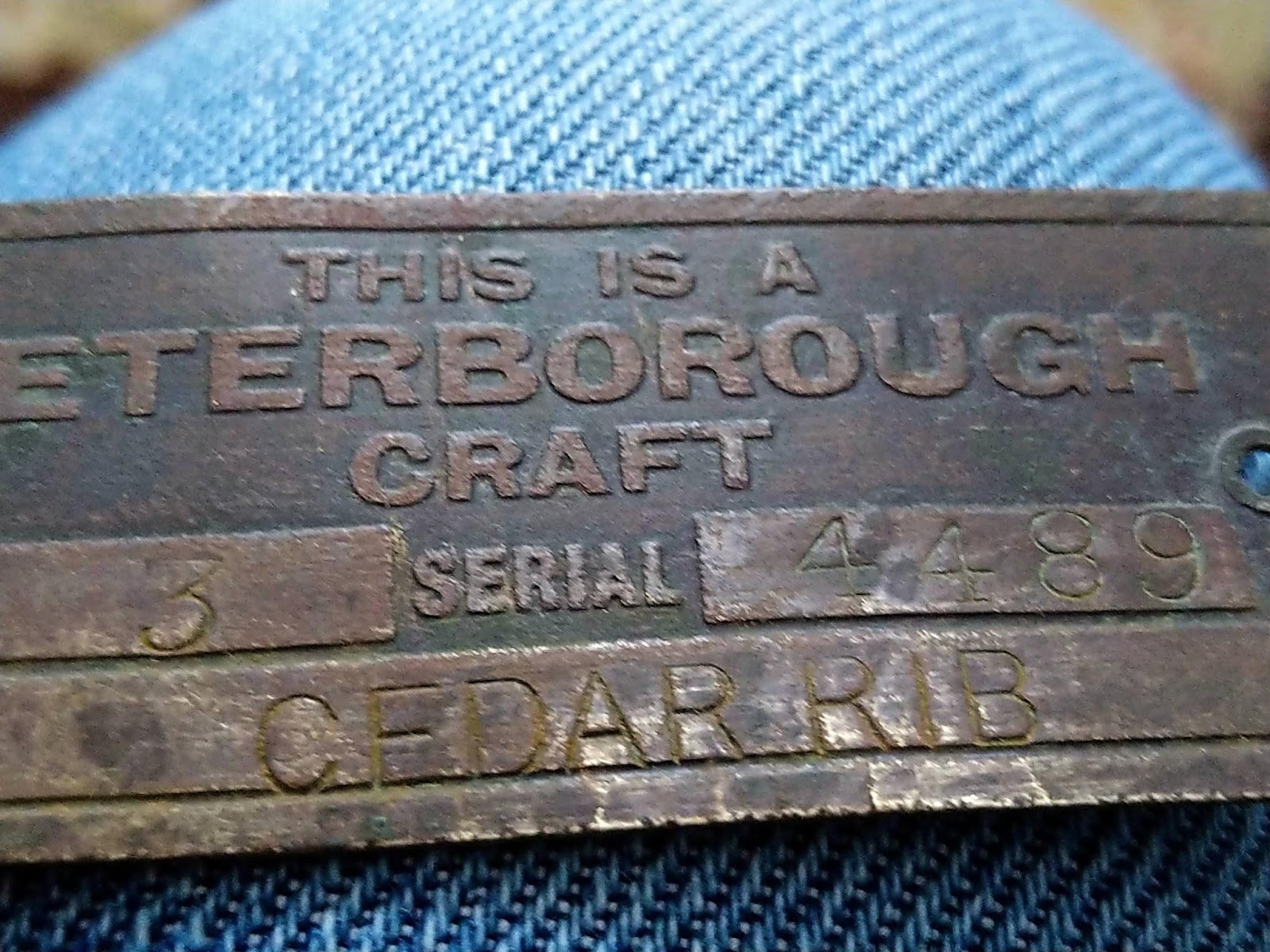samb
Wooden Canoe Maniac
Not a model, but a real one this time!
I have become the owner of a Peterborough rib canoe. At present I’ve not had much time to properly examine it but here’re some initial thoughts.
It is 14 ½ feet long and 32 inches wide (outside of gunnels at centre: - I wonder how they measured the beam? It’s about 29 ¾ “ outside of the hull ignoring gunnels)
Although most of both coamings are missing, the Id. plate was luckily loose up under the deck and survived a 6 hour drive without falling out.

On the Id. plate is : Model 3, serial 4489, grade cedar rib. The P’boro 19th catalogue page 15 https://woodencanoemuseum.org/sites/default/files/2021-02/Peterborough Undated 19th reduced.pdf (1918-19?) says no 3 is 15 ½ feet x 29 ½ “. This canoe is 14 ½ feet. By the 1927 catalogue, model 3 no longer exists. Are there any catalogues in between?
I can’t imagine this being the wrong plate: cedar ribs are few and far between in the Uk so I can’t see anyone finding one and adding it to their boat. If the boats arrived dis assembled and nested in the UK then I suppose it could have had the wrong plate fitted?
Being a single digit model means it is from before 1940.
The thwart tags are with the Peterborough and emblem and ‘trade mark’ meaning it is from after 1911

Other details which might help to date it:
Outer stem blends into the hull with a curved cut rather than blending into a keel as on a 1930 rib boat
No keel or sign of one - just stem band along the length of the boat unlike the 1930 boat
So . . . . initial thoughts are to date it sometime between 1911 and 1930 is my present best guess.
Many more photos to follow!
Sam
I have become the owner of a Peterborough rib canoe. At present I’ve not had much time to properly examine it but here’re some initial thoughts.
It is 14 ½ feet long and 32 inches wide (outside of gunnels at centre: - I wonder how they measured the beam? It’s about 29 ¾ “ outside of the hull ignoring gunnels)
Although most of both coamings are missing, the Id. plate was luckily loose up under the deck and survived a 6 hour drive without falling out.
On the Id. plate is : Model 3, serial 4489, grade cedar rib. The P’boro 19th catalogue page 15 https://woodencanoemuseum.org/sites/default/files/2021-02/Peterborough Undated 19th reduced.pdf (1918-19?) says no 3 is 15 ½ feet x 29 ½ “. This canoe is 14 ½ feet. By the 1927 catalogue, model 3 no longer exists. Are there any catalogues in between?
I can’t imagine this being the wrong plate: cedar ribs are few and far between in the Uk so I can’t see anyone finding one and adding it to their boat. If the boats arrived dis assembled and nested in the UK then I suppose it could have had the wrong plate fitted?
Being a single digit model means it is from before 1940.
The thwart tags are with the Peterborough and emblem and ‘trade mark’ meaning it is from after 1911
Other details which might help to date it:
Outer stem blends into the hull with a curved cut rather than blending into a keel as on a 1930 rib boat
No keel or sign of one - just stem band along the length of the boat unlike the 1930 boat
So . . . . initial thoughts are to date it sometime between 1911 and 1930 is my present best guess.
Many more photos to follow!
Sam
